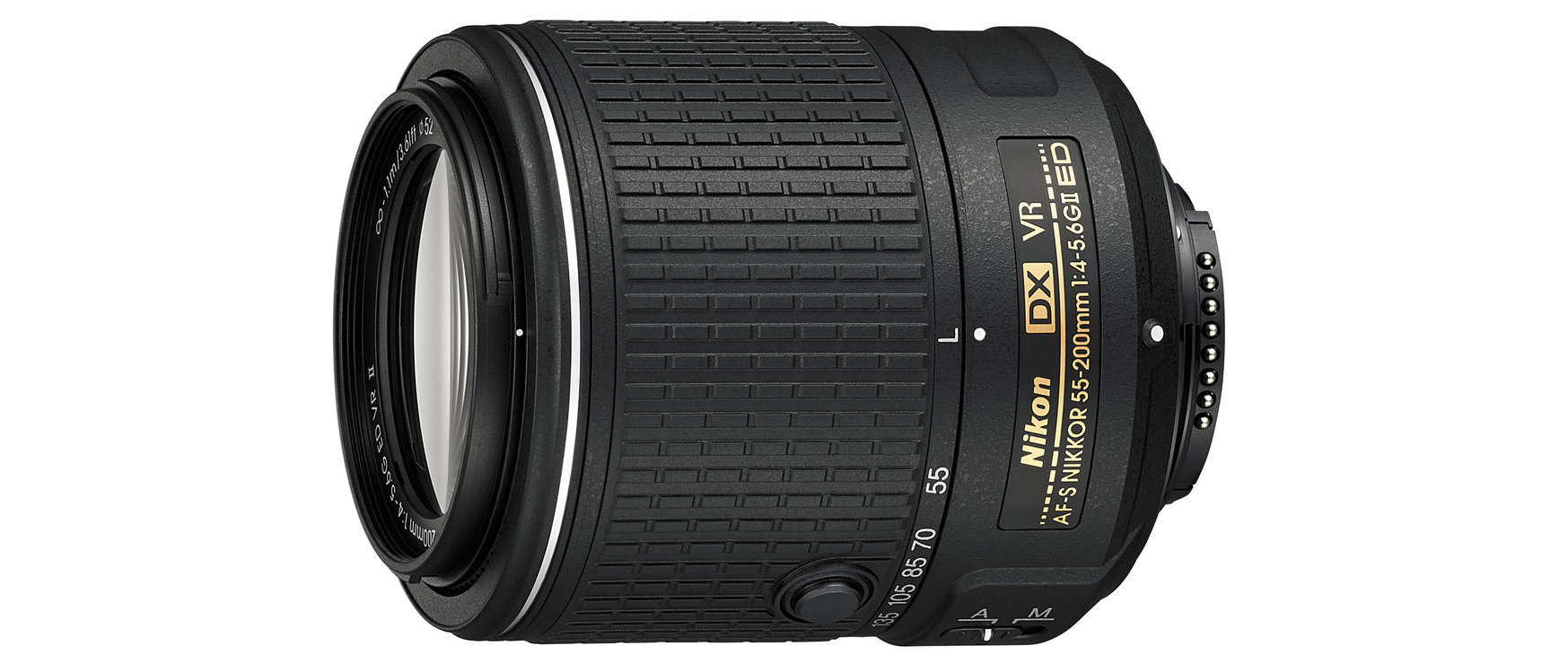Digital Camera World Verdict
With its compact retractable design, this lens is the ideal telephoto counterpart to recent Nikon 18-55mm kit zooms, which also retract to save stowage space. It’s nicely lightweight at just 300g, although part of the weight-saving is down to having a plastic rather than metal mounting plate. Even so, build quality feels pretty good and the lens is crisp and sharp throughout most of the zoom range, only dropping off noticeably at the long end.
Pros
- +
Compact and lightweight
- +
Retractable design
- +
Good overall performance
Cons
- -
Plastic mounting plate
- -
No focus distance scale
- -
Hood sold separately
Why you can trust Digital Camera World
Designed for DX (APS-C) DSLRs, the Nikon AF-S DX 55-200mm f/4-5.6G ED VR II has an ‘effective’ zoom range of 82.5-300mm, neatly picking up the baton from Nikon’s DX 18-55mm kit zoom lenses. Both of the standard and telephoto zooms have a similar space-saving retractable design but, unlike the latest ‘AF-P’ versions of the 18-55mm standard zoom, the 55-200mm is compatible with older Nikon DSLRs.
Specifications
Mount: Nikon F (DX)
Full-frame: No
Autofocus: Yes
Stabilization: Yes
Lens construction: 13 elements in 9 groups
Angle of view: 28.8 to 8 degrees
Diaphragm blades: 7
Minimum aperture: f/22-32
Minimum focusing distance: 1.1m
Maximum magnification ratio: 0.23x
Filter size: 52mm
Dimensions: 71x83mm
Weight: 300g
Key features
Whereas the VR and non-VR editions of the AF-P 18-55mm has a ‘pulse’ stepping motor that makes it incompatible with older DSLRs, this lens has a more traditional ring-type ultrasonic autofocus system the ensures compatibility with back-catalog cameras. As such, it’s fast and snappy for stills but less ideal for movie capture, and comes with the usual full-time manual override facility.
The VR (Vibration Reduction) system has a 4-stop effectiveness and can be a real shot-saver, considering that Nikon DSLRs have no in-body stabilization. A/M focus mode and VR on/off switches are featured, saving the effort of hunting around in camera menus to make any changes. However, there are no additional ‘Active’ or ‘Sport’ modes for the VR.
As with the autofocus system, the 7-blade aperture diaphragm is controlled mechanically by Nikon’s conventional lever, further extending compatibility with older cameras. The optical path is based on 13 elements in total and includes one ED (Extra-low Dispersion) element. Super Spectra Coating is applied to reduce ghosting and flare. Build quality feels pretty solid overall but the lens doesn’t feature any weather-seals and has a lightweight plastic rather than metal mounting plate.
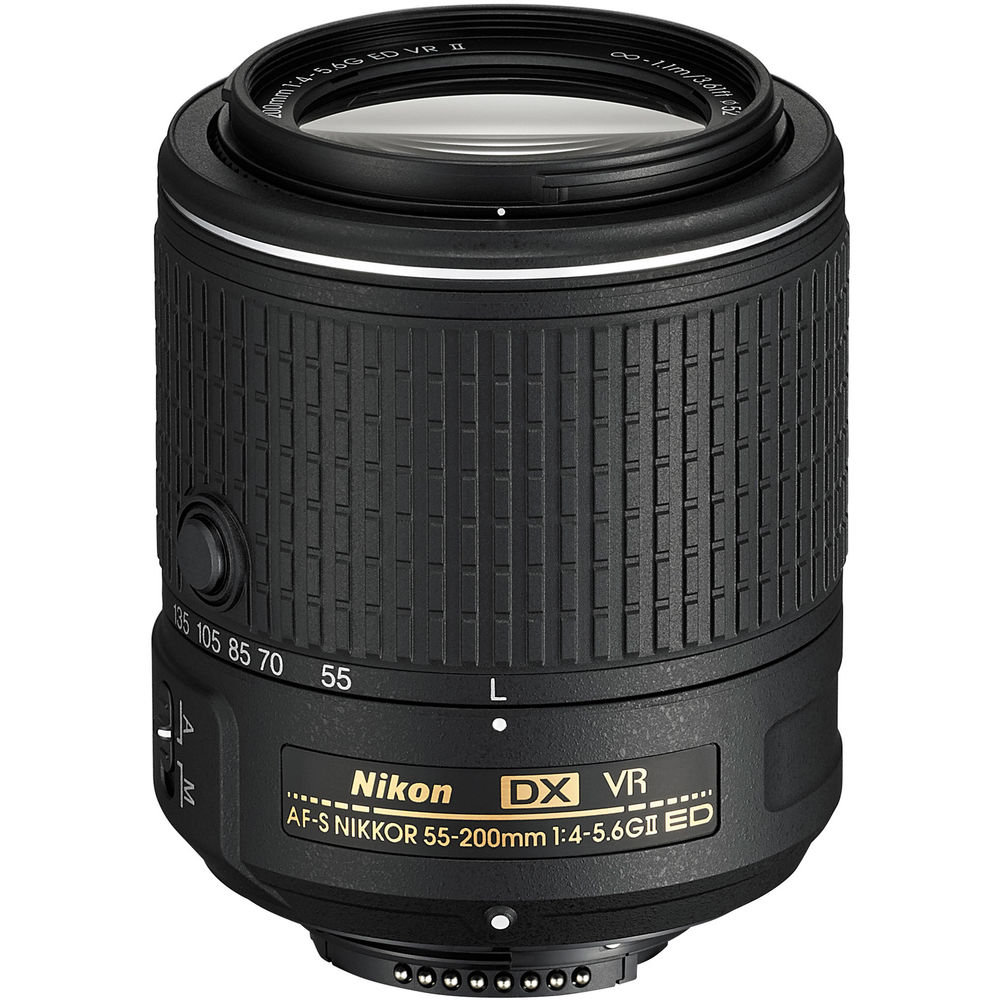
Performance
Although small and lightweight for a telephoto zoom lens, the Nikon delivers good performance, with quick autofocus and 4-stop VR, as billed. Sharpness is very good across most of the frame even when shooting wide-open, throughout most of the zoom range. However, there’s a noticeable drop-off at the longest focal length. Lateral chromatic aberration shows up at both ends of the zoom range, towards the edges and corners of the image frame, when uncorrected in-camera, as with early Nikon DSLRs. Distortion is fairly minimal throughout the zoom range.
Lab results
We run a range of lab tests under controlled conditions, using the Imatest Master testing suite. Photos of test charts are taken across the range of apertures and zooms (where available), then analyzed for sharpness, distortion and chromatic aberrations.
We use Imatest SFR (spatial frequency response) charts and analysis software to plot lens resolution at the center of the image frame, corners and mid-point distances, across the range of aperture settings and, with zoom lenses, at four different focal lengths. The tests also measure distortion and color fringing (chromatic aberration).
Sharpness:
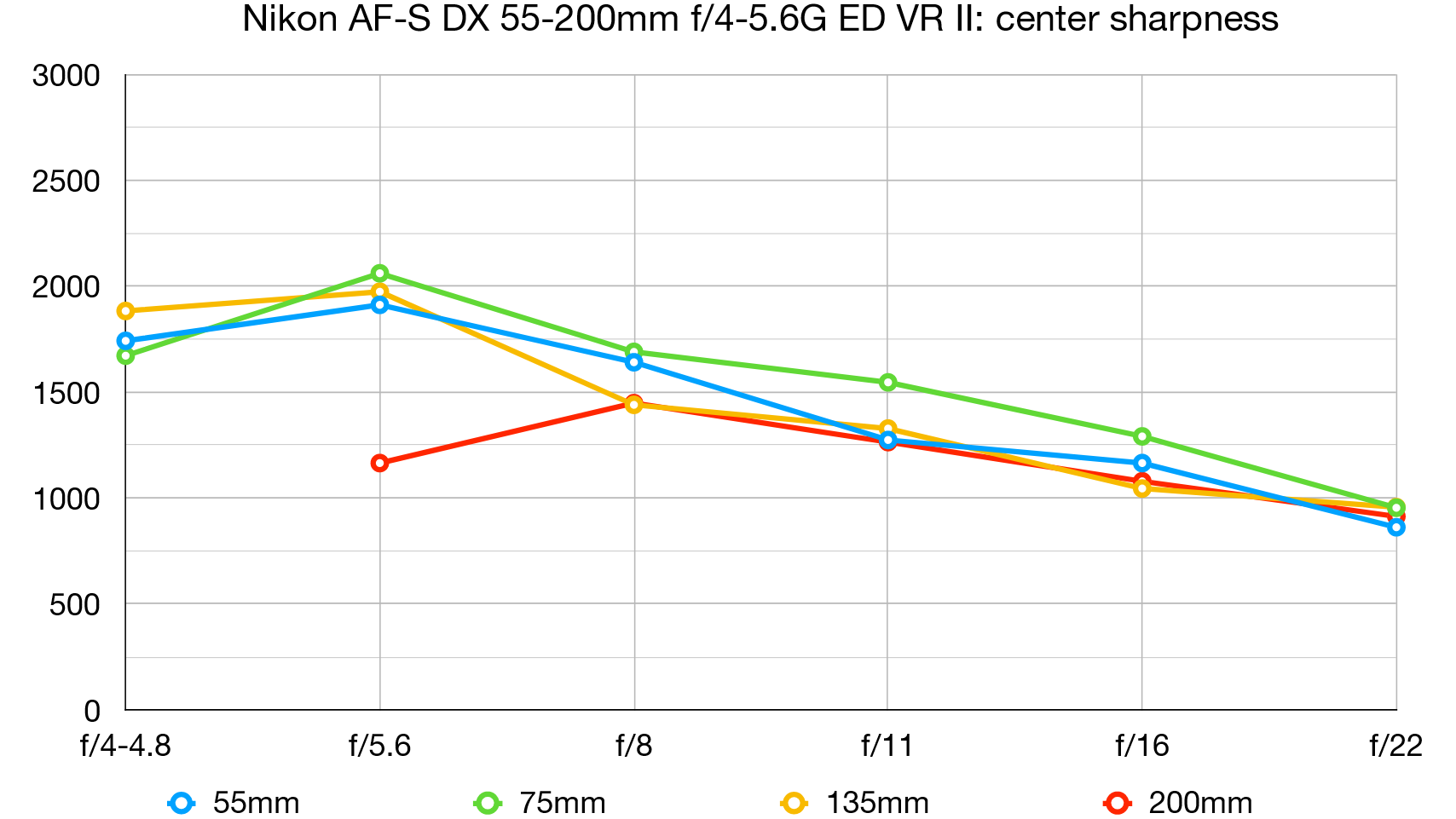
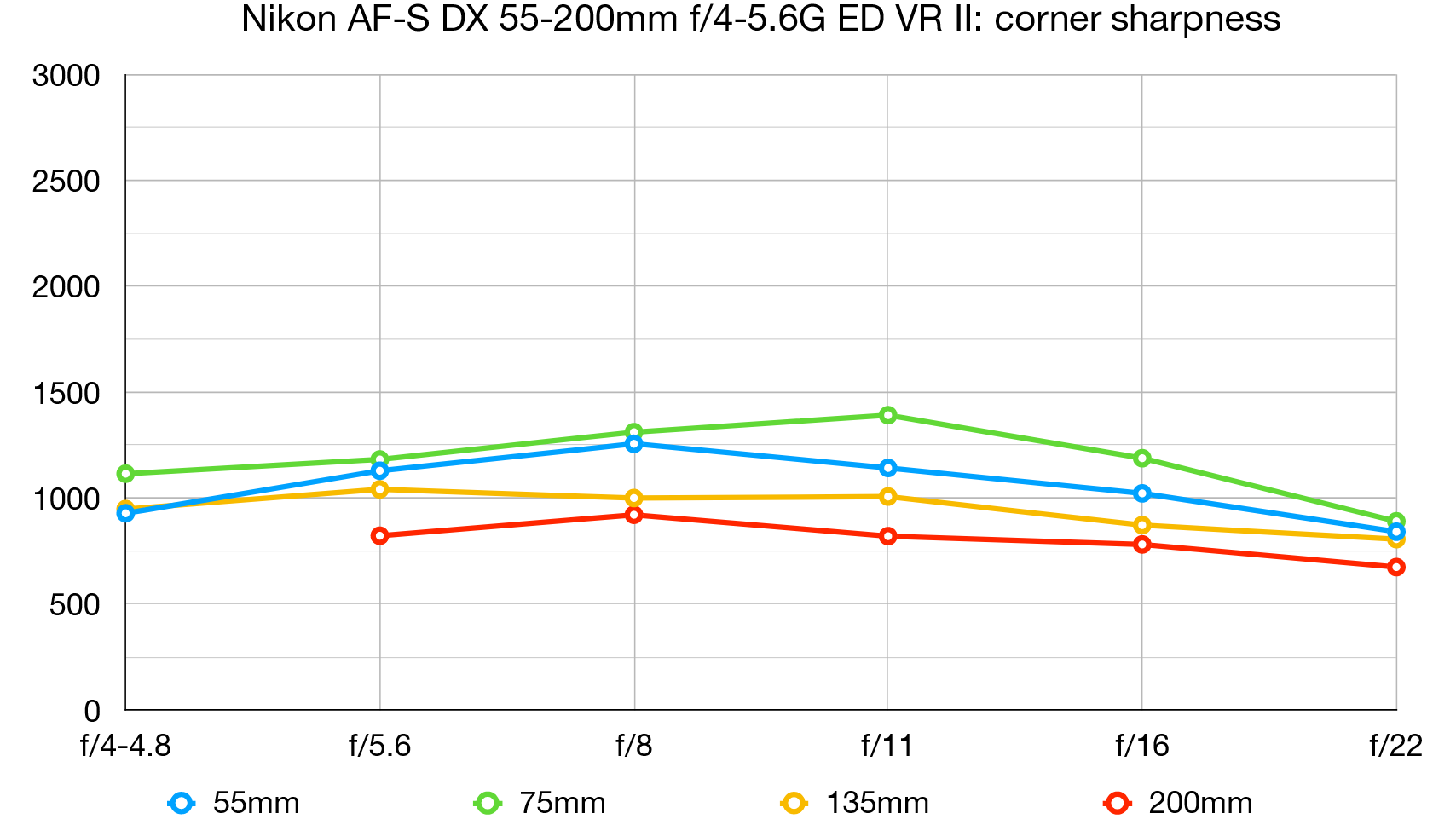
Sharpness across most of the image frame is very good in the 55-135mm sector of the zoom range, with a typical softening at the extreme edges. Sharpness drops off noticeably at 200mm but still pretty good at f/8.
Fringing:
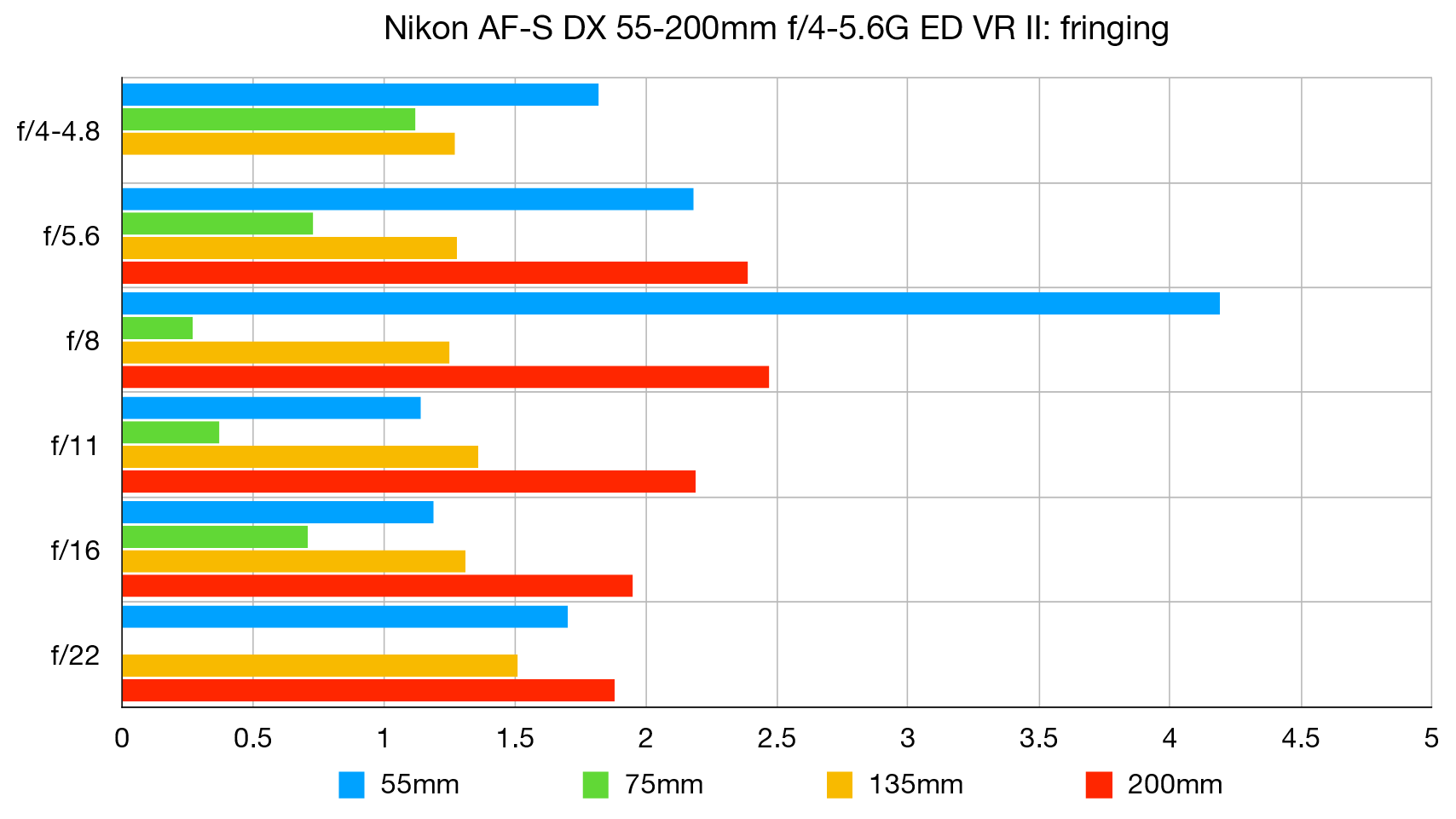
There’s little color fringing to be seen in the central sector of the zoom range but it can be noticeable at each end towards the edges and corners of the frame, when using early Nikon DSLRs that don’t feature in-camera correction.
Distortion:
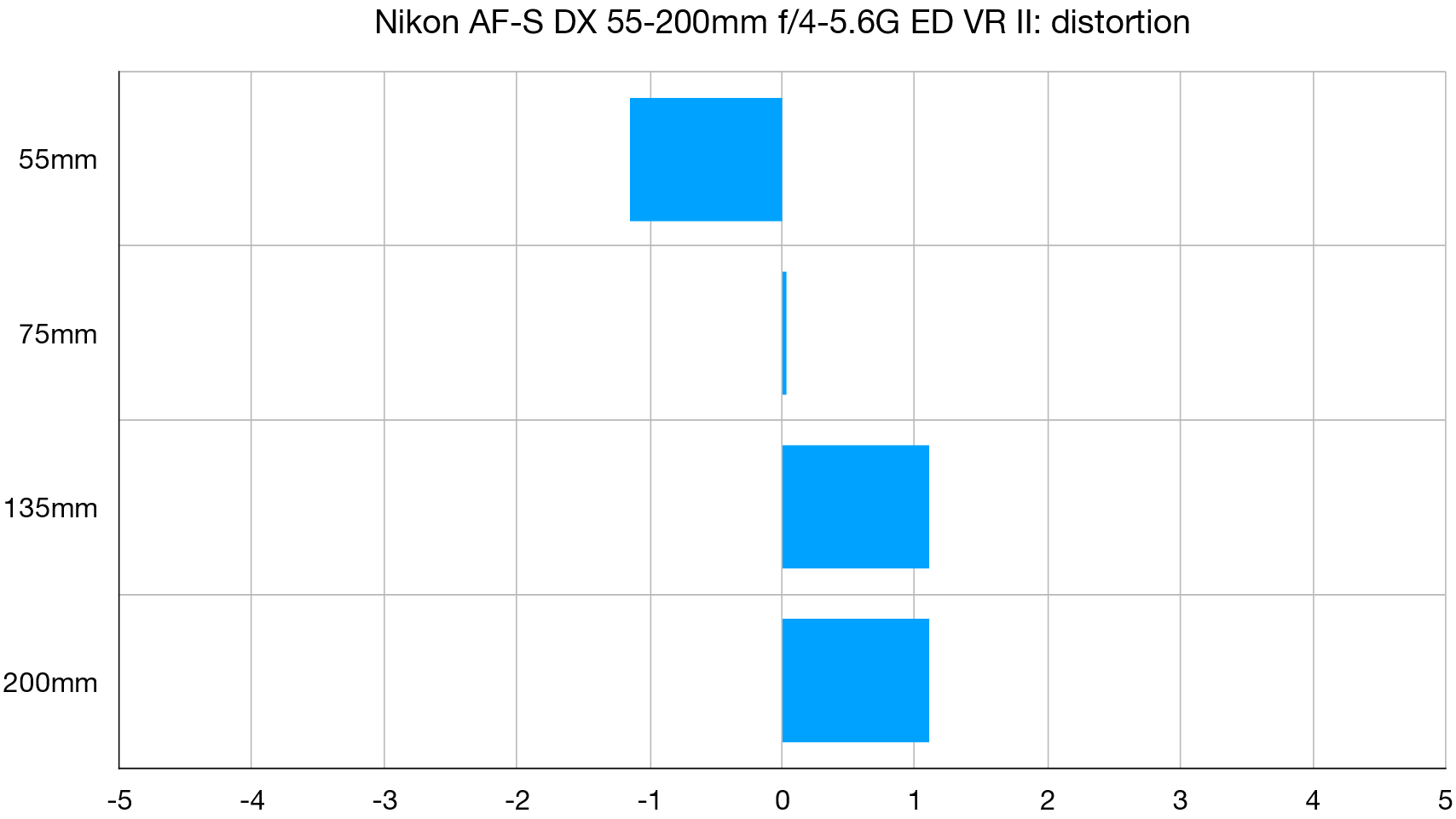
There’s minor barrel distortion at 55mm, virtually no distortion at 75mm and just a little pincushion at longer focal lengths.
Verdict
With its compact retractable design, this lens is the ideal telephoto counterpart to recent Nikon 18-55mm kit zooms, which also retract to save stowage space. It’s nicely lightweight at just 300g, although part of the weight-saving is down to having a plastic rather than metal mounting plate. Even so, build quality feels pretty good and the lens is crisp and sharp throughout most of the zoom range, only dropping off noticeably at the long end.
Read more:
• Best camera lenses to get
• Best Canon lenses
• Best Nikon lenses
• Best Sony lenses
Matthew Richards is a photographer and journalist who has spent years using and reviewing all manner of photo gear. He is Digital Camera World's principal lens reviewer – and has tested more primes and zooms than most people have had hot dinners!
His expertise with equipment doesn’t end there, though. He is also an encyclopedia when it comes to all manner of cameras, camera holsters and bags, flashguns, tripods and heads, printers, papers and inks, and just about anything imaging-related.
In an earlier life he was a broadcast engineer at the BBC, as well as a former editor of PC Guide.
